This easy ponzu sauce recipe marries the umami flavors of dashi, the sweetness of mirin, with a refreshing splash of citrus. I like to use it as a dipping sauce for tofu and seafood, as a simple salad dressing, or as a marinade for various proteins.

I used to buy premade ponzu sauce but stopped after discovering that making it at home yields flavors that are so much more bright and deep. My homemade version is called ponzu shōyu or just ponzu. I love the umami and earthy tones of soy sauce combined with the refreshing kick of citrus. Amazing what mixing 7 ingredients and storing them in the fridge can do. No simmering required.
Traditional Japanese ponzu sauce is made by simmering mirin, rice vinegar, bonito flakes (katsuobushi), and dried kelp (kombu). Once the liquid has cooled down, a combination of fruits such as yuzu, sudachi, kabosu (sometimes lemon juice) are added to give the sauce a little tartness. It’s used as a flavor booster for dressings and sauces, or can be used on its own as a sauce for cold dishes such as chilled tofu (hiyayakko) or sashimi, or as dipping sauce. Ponzu gets its depth of flavor and umami kick from the use of katsuobushi and kombu. Incidentally, those are the two ingredients that make up dashi – the base broth that flavors everything from miso soup, to oden, and udon noodles.
Table of contents

Ingredients
- Soy Sauce: I only use Japanese soy sauce when making this ponzu sauce recipe. That’s because Japanese soy sauce has more depth of flavor and a more balanced taste overall. Other types of soy sauces such as Chinese dark soy sauce or Thai soy sauce can either be too salty or too sweet. My favorite brand is Yamasa.
- Citrus: My guess is that, outside big cities such as New York, Los Angeles, Seattle, or Chicago, tracking down fresh yuzu, sudachi, or kabosu might be difficult. But, that’s okay! Combining fresh lemon juice and lime juice result in flavors that are very similar to Japan citrus fruits. If you would still like to taste traditional Japanese citrus flavors, try yuzu juice extract, which is made of 100% pure yuzu.
- Mirin: Mirin adds a little sweetness and a slight sake-like taste.
- Rice Vinegar: I use plain rice vinegar to enhance the tartness of the sauce.
- Bonito Flakes (Katsuobushi): Bonito flakes infuse a little smokiness and plenty of umami.
- Kelp (Kombu): Another element from the sea, kelp, brings in a briny taste and a little extra umami.
Variations
- Add fruitiness: Swap the lemon or the lime for an orange.
- Add some nuttiness: 1/4 teaspoon of toasted sesame oil per dipping bowl will infuse the ponzu with some nuttiness.
- Add some heat: Mincing 1 Thai chili and dividing it among 4 dipping bowls will add some heat. Or using a couple of drops of chili oil per dipping bowl will also make it spicy.
- Add some texture: Adding a little bit of grated daikon per dipping bowl (make sure to squeeze out some of the excess water – about 80% – before adding it) will give the sauce some texture and intensify every bite because it will also absorb some of the sauce.
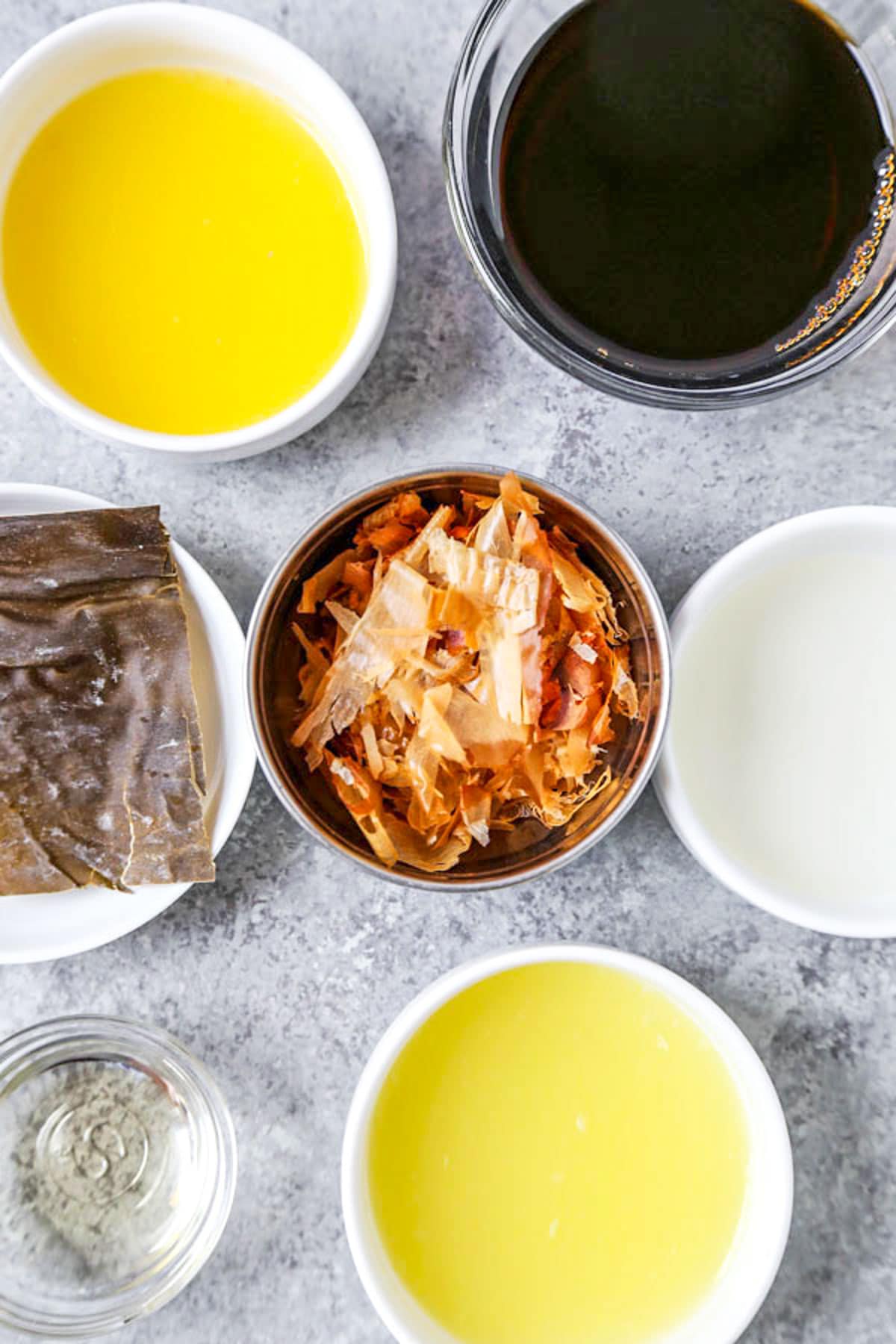
How To Make It
Scroll down to the recipe card for the full recipe.
- Measure and combine the ingredients in a jar and mix well. Close the jar with a lid.
- Refrigerate for at least 3 hours, up to overnight. The longer the ingredients sit in the jar, the more flavorful the ponzu sauce will be. I personally like to leave it overnight.
- Strain the ponzu through a mesh strainer into a bowl. Discard the piece of kombu and the bonito flakes. A cheesecloth also works for straining.
- Serve as a dipping sauce or to enhance the flavor of dishes that pair well with citrus and soy sauce.
Expert Cooking Tip
Use real mirin instead of mirin made with corn syrup. This makes such a big difference in how the ponzu sauce tastes – or any Japanese recipe using mirin for that matter – that you will never be able to go back to fake mirin. Real mirin is made with only 3 ingredients – glutinous rice, rice koji, and a sprinkle of salt – and is very complex in flavor. It’s a little sweet, boozy, and funky, with flavors that are quite delicate.
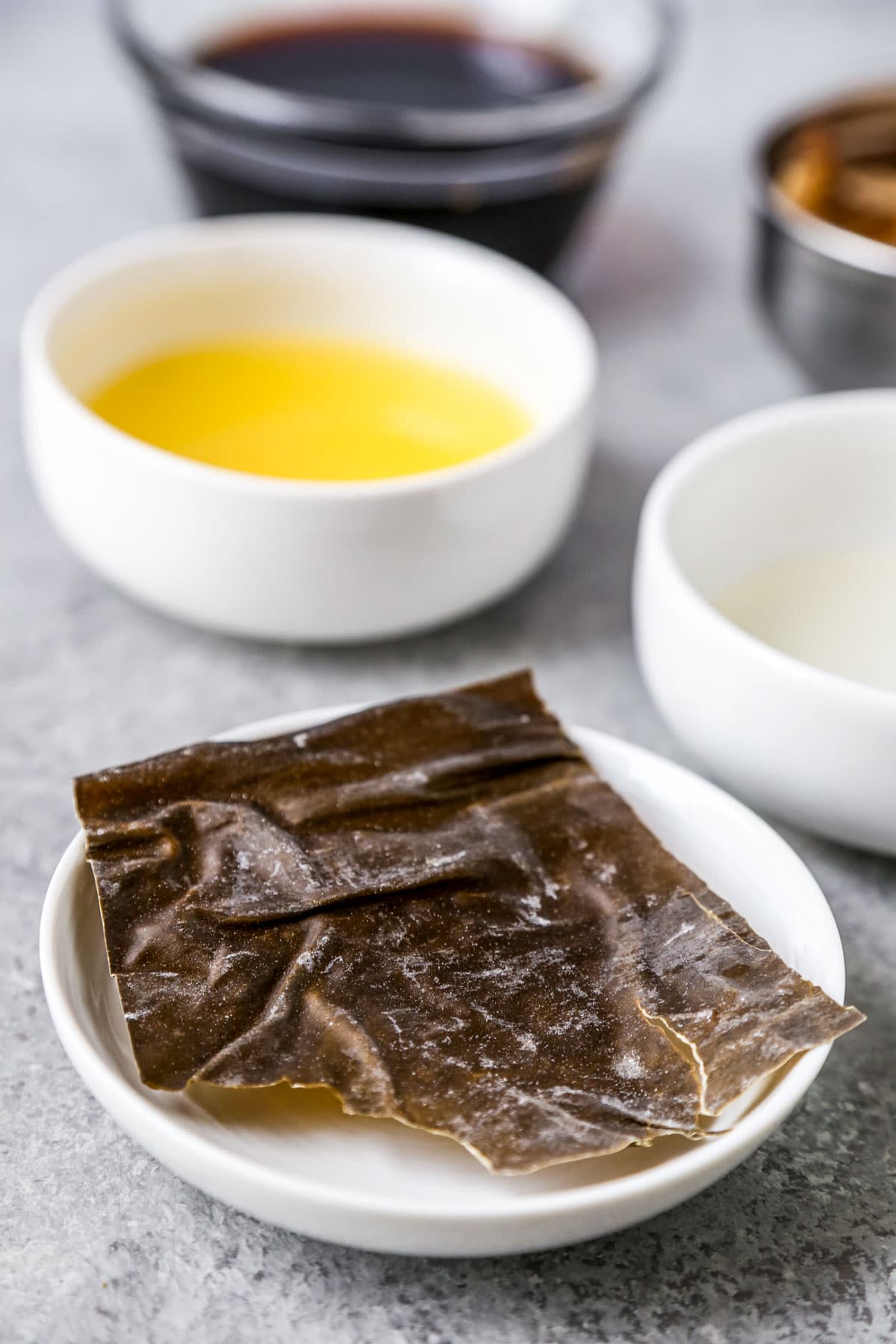
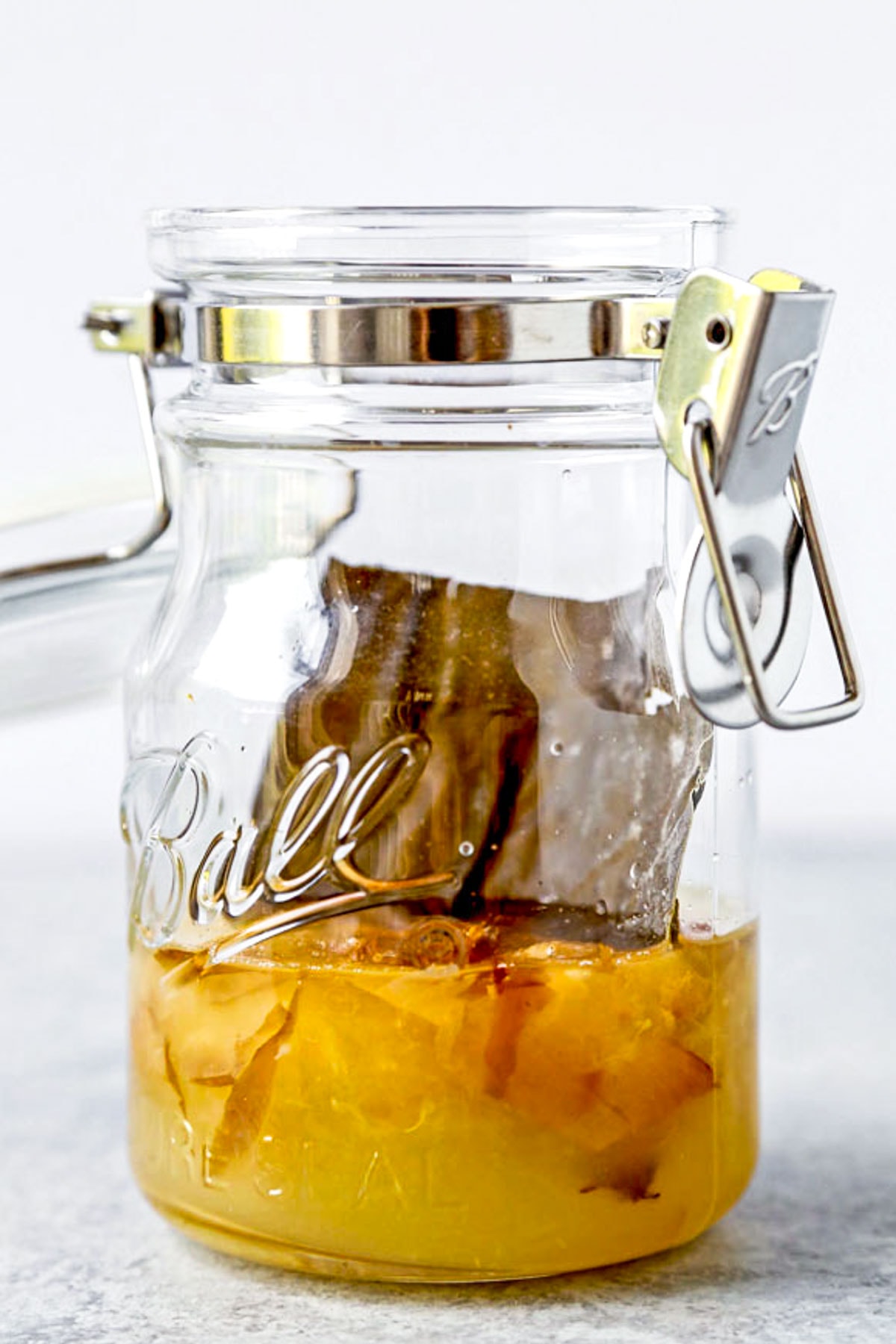
Storage
Fridge: Keep the ponzu sauce in a glass jar or other storage container with a lid. It will keep in the fridge for up to 3 weeks.
Freezer: Pour the ponzu sauce in ice cube trays and once the cubes are frozen, transfer them to a storage bag. Freeze for up to 2 months.
How To Use It
As I touched on previously, this is a superb dipping sauce for nabe and shabu-shabu. It’s a bright counterpoint to the typically savory cooking broths used in hot-pot. Another favorite use of mine is to drizzle a little over sashimi to complement the freshness of the fish, or with a chilled block of silken tofu.
Ponzu can also be used as a dipping sauce for cold noodle dishes such as zaru soba and somen, as a dressing for salads and coleslaws, or as a marinade for meats, seafood, and veggies, before they are tossed on the grill.
Other simple homemade Asian sauces to try:
Tonkatsu sauce, hoisin sauce, dumpling sauce, stir fry sauce, tempura sauce, black bean sauce, teriyaki sauce, eel sauce.

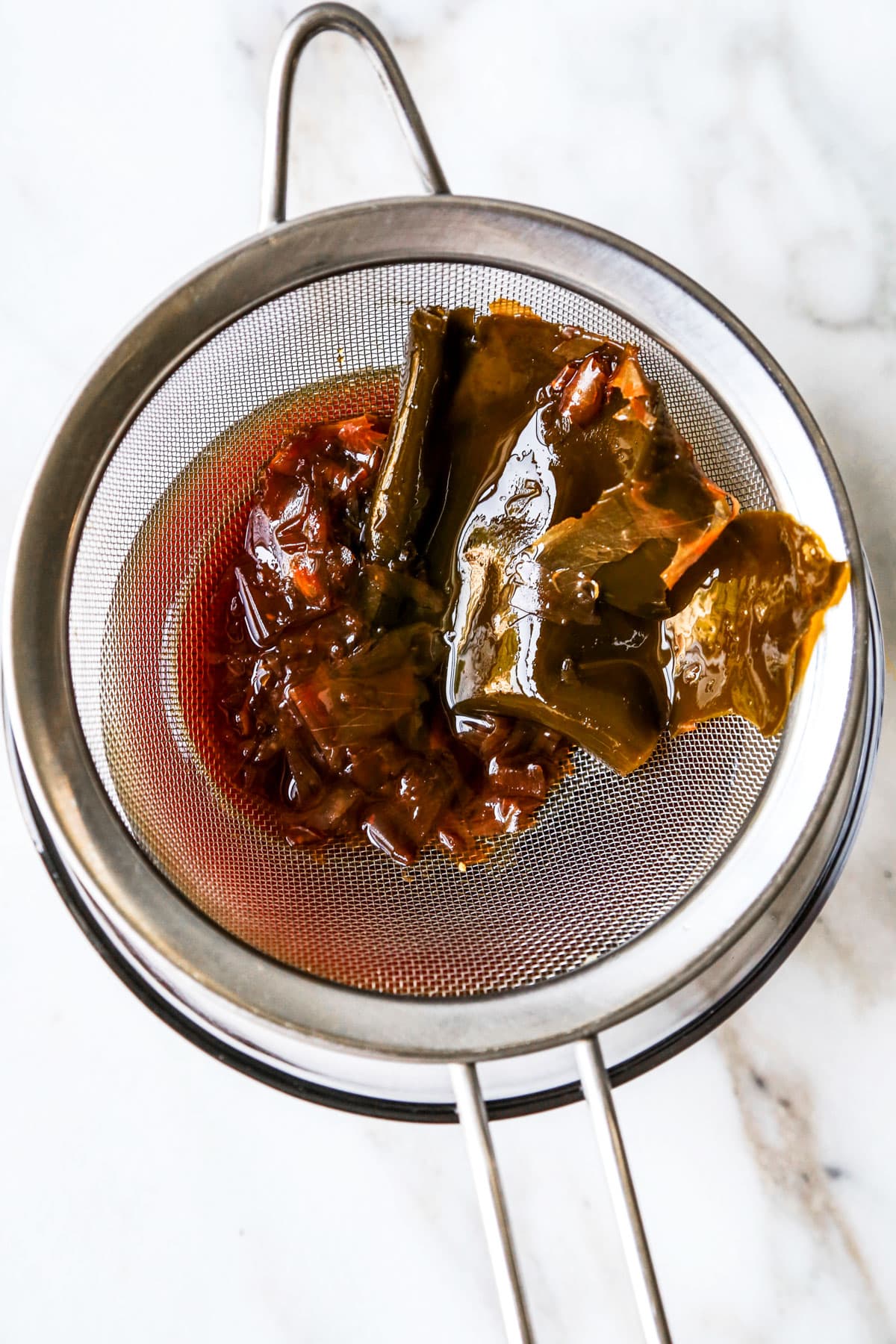
Frequently Asked Questions
No, this recipe isn’t gluten-free since it contains soy sauce. It’s also worth noting that some mirin may also contain soy sauce or may be made in facilities that are at risk of cross contamination. To make this ponzu sauce gluten-free, use gluten-free soy sauce or tamari, and make sure to read the label to ensure that the mirin you are using is also gluten-free.
Yes you can! Simply omit the use of bonito flakes and add one more piece of kelp. The final taste will not be exactly the same, but close enough and delicious enough to enjoy every sip of it. You can also try using a couple of dried shiitake mushrooms to infuse the sauce with extra earthy and umami flavors.
Whenever I have used bonito flakes, my go to recipe is this easy furikake. It works well because the bonito flakes and dehydrated, seasoned, and mixed with other ingredients to create a beautiful Japanese seasoning for rice.
You can use kombu dashi powder which can be purchased online at Asian supermarkets. I recommend starting with 1 teaspoon and adjusting the flavor until you are satisfied.
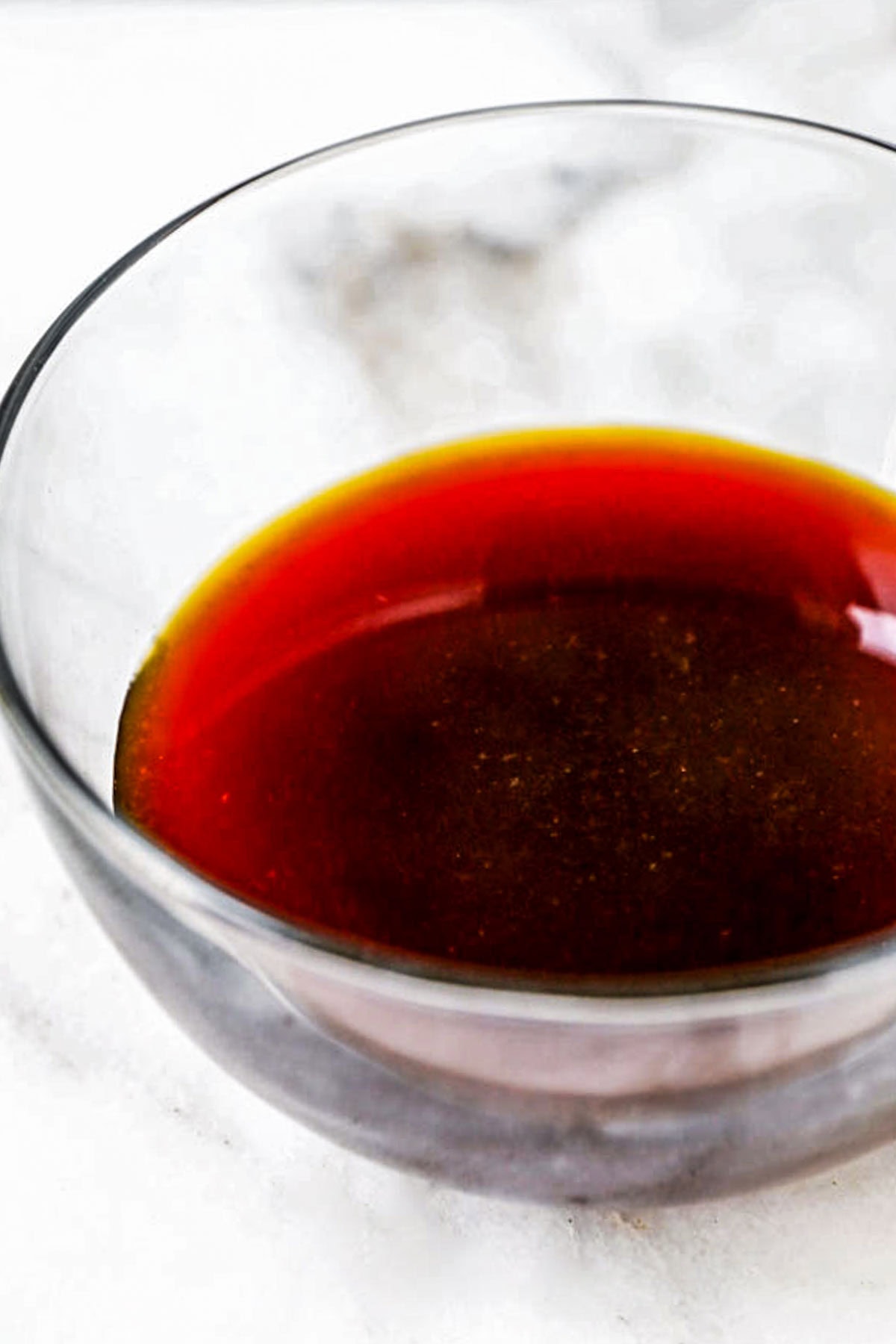
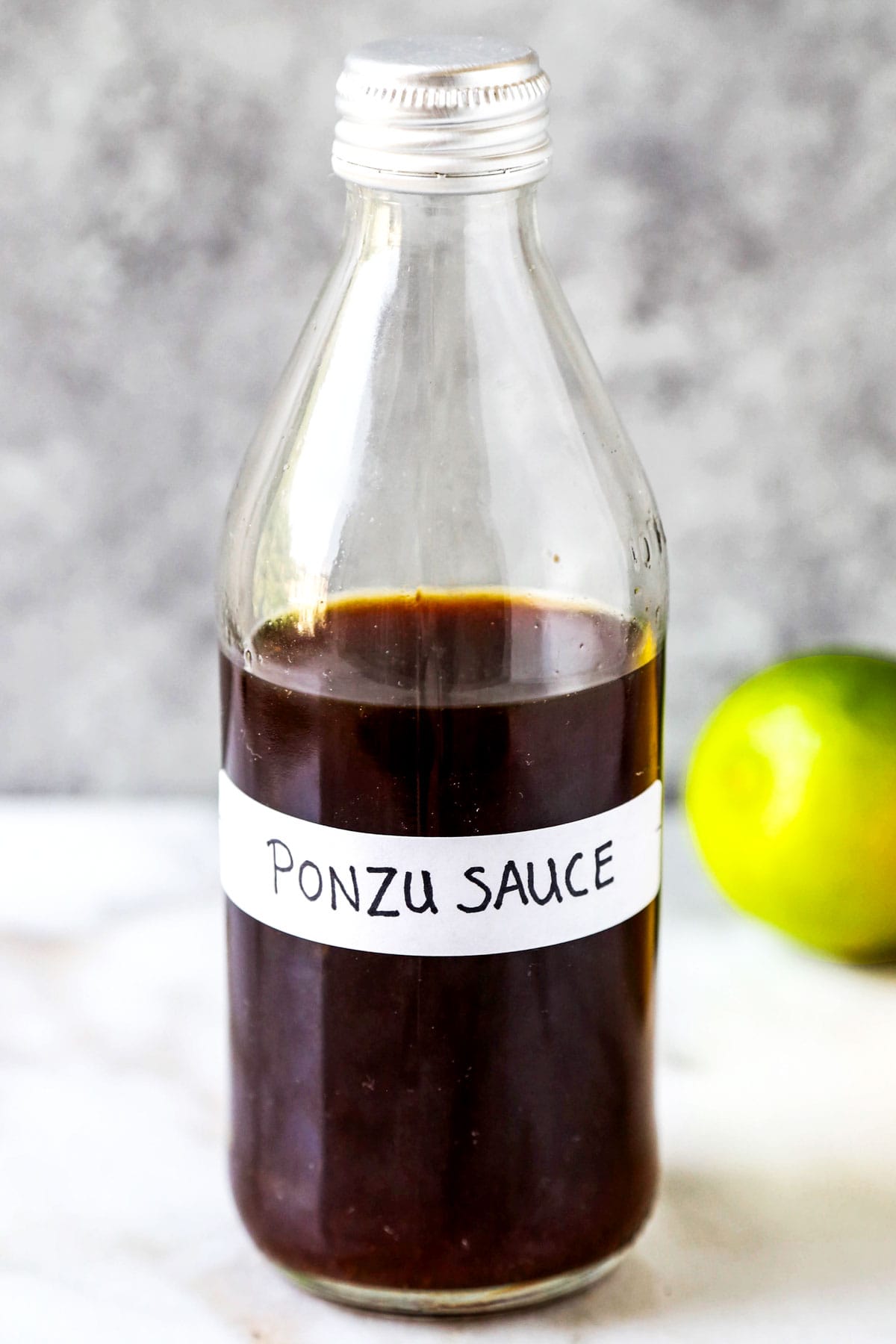
Did you like this recipe? Are there changes you made that you would like to share? Share your tips and recommendations in the comments section below!
Print
Homemade Ponzu Sauce (ポン酢)
- Prep Time: 2 minutes
- Cook Time: 0 minute
- Total Time: 3 hours
- Yield: About 1 cup 1x
- Category: Sauce
- Method: Steeping
- Cuisine: Japanese
- Diet: Low Fat
Description
A classic Japanese citrus and soy flavored sauce you can make at home!
Ingredients
- 1/2 cup soy sauce
- 1/4 cup lemon juice
- 1/4 cup lime juice
- 2 tablespoons mirin
- 1 tablespoon rice vinegar
- 1 3×3 inch piece dried kelp (kombu)
- 1/3 cup bonito flakes
Instructions
- Mix the ingredients. Combine all the ingredients in a jar or storage container, and mix well.
- Let the flavors develop. Cover with a lid and place in the fridge. Let sit for a minimum of 3 hours, or overnight. The longer it sits, the more depth of flavor the ponzu will have.
- Store it. Strain the sauce and discard the kombu and bonito flakes (or if you would like to reuse the bonito flakes, read my post on how to repurpose them). Transfer the sauce to a jar or other storage container and refrigerate for up to 3 weeks.
Notes
Using other citrus fruits: To use yuzu, sudachi, or kabosu, instead of lemon and lime, you can either use 100% of a single fruit, or play with combinations. It doesn’t really matter how you mix and match as long as the total measurement of citrus fruit remains at 1/2 cup.
Nutrition
- Serving Size: 1/4 cup
- Calories: 51
- Sugar: 5.5g
- Sodium: 883mg
- Fat: 01.g
- Saturated Fat: 0g
- Unsaturated Fat: 0g
- Trans Fat: 0g
- Carbohydrates: 10g
- Fiber: 0.2g
- Protein: 0.5g
- Cholesterol: 0mg















What is your preferred soy sauce for this recipe? Can’t wait to try it bb
Hi Sally! I usually stick to a regular soy sauce like Kikkoman or Yamasa 🙂 I hope you enjoy the recipe!
Homemade Ponzu is a 1000x better than store bought. Easy and cheap to make. I let it rest in the fridge for 2 days before straining and the liquid gets a very nice texture from the Kombu!!!!!
Since we can more easily find fresh Yuzu (at least in the US), would the replacement for the lemon/lime be the same amounts of using fresh yuzu?
Hi Corinne, I would assume it would be the same measurements, yes. You are so lucky to have access to fresh yuzu, I’m so jealous!
This is absolutely delicious! The first time I made it, I let it sit overnight before straining, and the taste of the bonito was too strong for me. So the next time, I kept tasting it every half hour or so until it was perfect. Years ago, I tasted a lime ponzu that I loved, so I tried this recipe with more lime juice and less lemon, and it was better than ever! Great recipe, and so simple once you have all of the ingredients! I will never buy ponzu from the store again!
Wonderful Katrina! I too prefer homemade sauces and condiments than store bought, they always taste so much better!